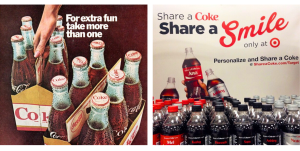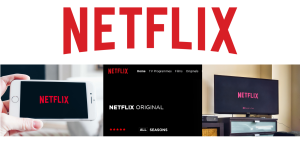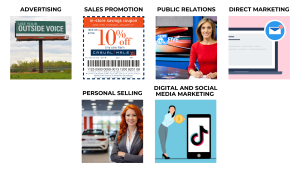Mayoor Mohan, Ph.D.

-Mayoor Mohan, Ph.D., Chapter 12 Author

INTRODUCTION
Integrated Marketing Communications (referred to hereafter as IMC) represents a contemporary and strategic shift in how companies approach marketing and communication strategies. In the past, businesses often managed their advertising, public relations, sales promotions, and direct marketing efforts in silos, with little coordination between these efforts and the teams that worked on them (Assael, 2011; Hartley and Pickton, 1999). However, as the marketplace has evolved—driven by technological advancements and changing consumer behaviors—there has been a growing recognition of the need for a more cohesive approach. IMC emerged as a response to this need, focusing on integrating all marketing communication tools to deliver a unified message that resonates across various channels (Batra and Keller, 2016). By aligning these efforts, companies can create stronger brand narratives and more effectively engage with their target audiences.
DIVING DEEPER: WHAT IS IMC, AND WHY IS IT IMPORTANT
First and foremost, IMC is a strategic approach that ensures a brand’s messaging is consistent across all touchpoints, whether through traditional media like television and print, or through digital platforms such as social media, email, and websites. In today’s fragmented media landscape, consumers interact with brands through numerous channels, and each interaction shapes their perception of the brand (Gensler et al., 2013). If these messages are inconsistent or contradictory, they can lead to confusion and weaken the brand’s identity.
IMC addresses this challenge by aligning all messaging with the brand’s core values and objectives, regardless of the platform. For instance, Coca-Cola consistently reinforces its brand message of happiness and togetherness across all platforms—from iconic TV ads to social media campaigns—ensuring that consumers always associate the brand with positive emotions. This unified approach not only strengthens brand recognition but also builds trust and loyalty among consumers, who increasingly value authenticity and transparency in their interactions with brands.

In order to define IMC, we can think of it as a strategic process that integrates and coordinates a company’s various communication channels to deliver a clear, consistent, and compelling message (Schultz, 1992). This contrasts with traditional marketing methods, where advertising, sales promotions, public relations, and direct marketing efforts might have been managed separately, leading to fragmented and often inconsistent messaging. The key components and objectives of an IMC strategy are as follows:
Components of IMC:
- Consistency Across Channels: IMC aims to deliver a unified message that resonates with consumers across all platforms, whether digital, print, or broadcast. This consistency is key to building brand recognition and trust.
- Consumer-Centric Approach: Understanding consumer behavior and preferences allows brands to tailor their messages effectively. In today’s marketing landscape, personalized interactions are crucial to engaging with the audience.
- Collaboration Across Functions: Successful IMC requires teamwork across various departments, such as marketing, sales, public relations, and customer service, to ensure that all communications align with the overall brand strategy.
- Multi-Channel Engagement: By leveraging multiple channels, including social media, email, digital advertising, and traditional media, IMC reinforces brand messages and enhances consumer loyalty.
Objectives of IMC:
- Building Brand Equity: A cohesive brand image enhances brand equity and fosters consumer loyalty.
- Increasing Efficiency: An integrated approach streamlines marketing efforts, reduces redundancy, and improves resource allocation.
- Enhancing Consumer Experience: IMC creates a seamless and positive consumer experience, strengthening the connection between the brand and its audience.
Beyond maintaining message consistency, IMC plays a crucial role in enhancing the efficiency and effectiveness of marketing efforts. By integrating various communication channels and tools, companies can create synergies that amplify their overall impact.
 For example, Nike effectively coordinates its social media presence with high-profile advertising campaigns, such as “Just Do It,” and in-store promotions. These elements work together to create a seamless brand experience, driving both engagement and sales. In an era where consumers are bombarded with information, delivering a clear, compelling message across multiple platforms is essential for long-term marketing success.
For example, Nike effectively coordinates its social media presence with high-profile advertising campaigns, such as “Just Do It,” and in-store promotions. These elements work together to create a seamless brand experience, driving both engagement and sales. In an era where consumers are bombarded with information, delivering a clear, compelling message across multiple platforms is essential for long-term marketing success.
Additionally, IMC is vital for adapting to the changing dynamics of consumer behavior. Today’s consumers are not passive recipients of marketing messages; they actively engage with brands across multiple platforms and expect a seamless experience (Hanna, Rohm, and Crittenden, 2011). Netflix excels at ensuring that its branding and messaging are consistent across its streaming platform, mobile app, social media channels, and original content promotions. IMC allows brands to meet these expectations by ensuring that every interaction feels consistent and aligned with the brand’s overall message. This approach not only enhances customer satisfaction but also strengthens long-term loyalty, as consumers feel more connected to brands that communicate with one clear and consistent voice.

In summary, IMC is essential for modern marketing strategies, enabling organizations to communicate their brand message effectively and meaningfully engage with consumers. As a result, it is not surprising that anyone involved in marketing must have a solid grasp of these foundational IMC concepts. This knowledge is the bedrock upon which more complex marketing strategies are built, allowing for more effective communication, brand building, and customer engagement.
KEY PROMOTIONAL TOOLS WITHIN AN IMC PROGRAM
An IMC program leverages a variety of promotional tools to deliver a cohesive and persuasive brand message across multiple touchpoints. Each tool plays a specific role within the overall strategy, contributing to the brand’s ability to engage and influence its target audience. Understanding the unique strengths and functions of these tools is essential for crafting effective IMC campaigns. Below, we explore the primary promotional tools used in IMC, highlighting their roles and applications.
Primary Promotional Tools Used in IMC

ADVERTISING
Advertising is one of the most visible and widely used tools in IMC. It involves paid, non-personal communication through various media channels such as television, radio, print, and digital platforms. The primary goal of advertising is to create awareness, generate interest, and persuade consumers to take action. Advertising is particularly effective in reaching a large audience quickly, making it ideal for building brand recognition and introducing new products to the market.
In an IMC program, advertising often serves as the foundation upon which other promotional tools build. For example, a television commercial can create initial awareness, which is then reinforced by digital ads, social media posts, and other promotional activities. Advertising also allows for creative expression, enabling brands to craft memorable messages that resonate emotionally with consumers. The use of consistent imagery, slogans, and themes across all advertisements ensures that the brand message remains unified and recognizable across different platforms.
Can you think of some advertisements you’ve seen for different brands? Most likely, the answer is yes! Maybe it is one of the many comedic commercials that run each year during the Super Bowl broadcast. Perhaps the ads you are thinking of were part of famous campaigns, like Dos Equis’ “The Most Interesting Man in the World,” Old Spice’s “Smell Like a Man, Man,” or Dove’s “Real Beauty.” It’s possible the first things that came to your mind were traditional forms of advertising, like television commercials and out-of-home (OOH) ads such as billboards. Of course these are still very popular ways for companies to advertise, but non-traditional advertising has become a way brands are seeking to garner attention. You may remember “Red Bull Stratos,” a highly-publicized brand stunt where a skydiver jumped out of a helium balloon in Earth’s stratosphere. In this instance Red Bull was not trying to educate consumers about product benefits of their energy drink per se, rather, they were trying to cultivate a positive brand image in the minds of their target audience.
SALES PROMOTION
Sales promotion refers to short-term incentives designed to stimulate immediate sales or encourage trial of a product. Common sales promotion tactics include discounts, coupons, contests, and buy-one-get-one-free offers. These promotions are often used to complement other elements of the IMC program by driving quick consumer action, such as a purchase or participation in a brand event.
Sales promotions are particularly effective in creating a sense of urgency and motivating consumers who are on the fence about making a purchase. In an IMC context, sales promotions can be timed to coincide with advertising campaigns or new product launches, amplifying their impact. For instance, a digital ad campaign might promote a limited-time discount, encouraging consumers to act quickly. While sales promotions are powerful tools for boosting short-term sales, they must be used strategically to avoid eroding brand value or creating a reliance on discounts.
PUBLIC RELATIONS
Public relations (PR) involves managing the public image of a brand and fostering positive relationships with various stakeholders, including the media, consumers, and the general public. PR activities can include press releases, media outreach, event sponsorships, and community engagement initiatives. The goal of PR is to build and maintain a positive brand reputation, which can enhance the effectiveness of other IMC efforts.
In an IMC program, PR works to reinforce the brand’s message and values by generating favorable publicity and managing any potential negative exposure. For example, a successful PR campaign might involve securing media coverage for a new product launch, which complements the advertising and promotional efforts by providing additional credibility and reach. PR is also crucial during crises, where effective communication can protect and even strengthen the brand’s reputation.
DIRECT MARKETING
Direct marketing is a targeted form of communication that reaches consumers directly through channels such as email, direct mail, telemarketing, and SMS. Its key advantage is its ability to personalize messages based on consumer data, making it highly effective for driving specific actions, such as purchases, sign-ups, or event attendance.
Within an IMC framework, direct marketing allows brands to engage with consumers on a one-to-one basis, offering tailored content that aligns with their preferences and behaviors. For example, an email campaign might deliver personalized product recommendations based on a consumer’s previous purchases, thereby increasing the likelihood of conversion. Direct marketing also provides measurable results, allowing marketers to track responses and adjust strategies in real-time for maximum effectiveness.
PERSONAL SELLING
Personal selling involves direct interaction between a salesperson and a potential customer, usually with the aim of closing a sale or building a long-term relationship. This tool is particularly important in industries where products are complex, expensive, or require a high level of customization, such as real estate, automotive, and B2B services (Gilmore and Pine, 1997).
In an IMC program, personal selling complements other promotional tools by providing a personalized touchpoint where consumers can ask questions, receive detailed information, and get reassurance before making a purchase decision. Personal selling is often supported by other IMC efforts, such as advertising that generates leads or sales promotions that entice customers to visit a store or contact a sales representative. The key to effective personal selling within IMC is ensuring that the salesperson’s message is consistent with the brand’s overall communications, reinforcing the brand’s value proposition.
DIGITAL AND SOCIAL MEDIA MARKETING
Digital and social media marketing encompasses a broad range of online activities designed to engage consumers, build brand awareness, and drive conversions. This includes everything from search engine marketing (SEM) and online display ads to social media campaigns on platforms like Facebook, Instagram, and TikTok. Digital and social media marketing is integral to IMC because it allows brands to reach and interact with consumers in real-time, often fostering two-way communication.
In the context of IMC, digital and social media marketing plays a pivotal role in maintaining ongoing engagement with the target audience. For instance, a brand might use social media to continue the conversation started by a TV ad, encouraging followers to share their own experiences or participate in a contest. The interactive nature of social media also provides valuable feedback, which can be used to refine other elements of the IMC program. Additionally, the ability to track and analyze online behavior enables marketers to optimize their campaigns for better performance.
CONCLUSION: BUILDING AN EFFECTIVE IMC PROGRAM
It is important to remember that IMC is more than just a collection of promotional tools; it’s a strategic approach that ensures all marketing communications work together to convey a consistent and compelling brand message. Throughout this chapter, we’ve explored how IMC integrates diverse tools like advertising, sales promotions, public relations, direct marketing, personal selling, and digital media into a cohesive strategy.
The essence of an effective IMC program lies in its ability to create synergy among these tools, amplifying the brand message across all consumer touchpoints. For instance, a well-executed advertising campaign can generate awareness, which is then reinforced by sales promotions that drive immediate action, public relations efforts that build credibility, and digital marketing that fosters ongoing engagement.
In today’s competitive and fragmented marketplace, the ability to execute a well-coordinated IMC strategy is vital for any brand seeking to stand out and succeed. By mastering the art of integration and leveraging the strengths of each promotional tool, marketers can create campaigns that not only capture attention but also engage, inspire, and drive results. As you continue to develop your marketing skills, remember that IMC principles are foundational to building effective, results-driven communication strategies that resonate with your audience and achieve your business objectives.
CHAPTER ASSIGNMENT – REFLECTING ON IMC
Below are two reflection activities based on industry leaders, Apple and Starbucks. This activity is designed to help you apply the concepts of IMC by analyzing how these companies use integrated strategies to build and maintain strong brand identities. Consider the following prompts to guide your reflections.
Apple – Crafting a Consistent and Powerful Brand Message
Apple is renowned for its seamless integration of IMC strategies, particularly in promoting its flagship product, the iPhone. The company’s approach to advertising, public relations, digital marketing, and other promotional tools has established a consistent and powerful brand image worldwide.
Turn the Card to See the Reflection Prompt
Starbucks – Building Loyalty Through IMC
Starbucks has successfully used IMC to build a global brand that is synonymous with premium coffee and a unique customer experience. The company’s use of social media, in-store promotions, public relations, and community engagement demonstrates the effectiveness of an integrated approach.
Turn the Card to See the Reflection Prompt
A FEW KEY TERMS AND CONCEPTS IN IMC
Here’s a summary of the key concepts and terms that are essential for understanding and applying IMC strategies effectively:
- Branding: The process of creating a unique identity for a product or service, encompassing elements like the brand name, logo, design, and messaging. Strong branding helps differentiate a brand in a crowded marketplace and is central to maintaining a consistent IMC strategy.
- Message Consistency: The uniformity of a brand’s message across all communication channels and touchpoints. Ensuring consistent messaging reinforces the brand’s identity and builds trust and recognition among consumers.
- Touchpoints: The various interactions a consumer has with a brand, whether through advertising, social media, customer service, or in-store experiences. Effective IMC ensures that each touchpoint contributes to a cohesive and positive brand experience.
- Target Audience: The specific group of consumers a brand aims to reach with its marketing efforts. Understanding the target audience is fundamental to crafting relevant and effective communication strategies that resonate with consumers’ needs and preferences.
- The Communication Process: Involves encoding a message, sending it through a selected medium, and then decoding it by the audience. Feedback from the audience is then analyzed to measure the effectiveness of the communication. This process is central to IMC, ensuring that messages are effectively conveyed and understood.
- AIDA Model (Attention, Interest, Desire, Action): A framework (which is one of many) used in marketing to describe the steps a consumer goes through from becoming aware of a product to making a purchase decision (Barry and Howard, 1990). IMC strategies often align with this model to move consumers through these stages effectively.
- Brand Equity: The value a brand adds to a product or service. High brand equity allows a company to charge premium prices, gain customer loyalty, and differentiate itself from competitors (Aaker, 2009). IMC plays a crucial role in building and maintaining this equity through consistent and impactful communications.
SUMMARY
In this chapter, we examined how Integrated Marketing Communications is a strategic shift for companies, particularly in relation to how they market and communicate with their audiences. Simply put, IMC is when brands make their messaging consistent across all touchpoints. The key components and objectives of IMC were then discussed. Next, you read about how aligning IMC efforts with consumer behavior leads to more successful outcomes. Then, six promotional tools leveraged by IMC programs were explored. These promotional tools include Advertising, Sales Promotion, PR/Publicity, Direct Marketing, Personal Selling, Digital Social Media. Finally, you thought about how Apple and Starbucks use integrated strategies to build and maintain vibrant brand identities.
REFERENCES
Aaker, D. A. Managing brand equity: Capitalizing on the value of a brand name. Simon and Schuster. 2009.
Assael, H. From silos to synergy: A fifty-year review of cross-media research shows synergy has yet to achieve its full potential. Journal of Advertising Research, 51(1 50th Anniversary Supplement), 42-58. 2011.
Barry, T. E., & Howard, D. J. A review and critique of the hierarchy of effects in advertising. International Journal of Advertising, 9(2), 121-135. 1990.
Batra, R., & Keller, K. L. Integrating marketing communications: New findings, new lessons, and new ideas. Journal of Marketing, 80(6), 122-145. 2016.
Gensler, S., Völckner, F., Liu-Thompkins, Y., & Wiertz, C. Managing brands in the social media environment. Journal of Interactive Marketing, 27(4), 242-256. 2013.
Gilmore, J. H., & Pine, B. J. The four faces of mass customization. Harvard Business Review, 75(1), 91-102. 1997.
Hartley, B., & Pickton, D. Integrated marketing communications requires a new way of thinking. Journal of Marketing Communications, 5(2), 97–106. 1999.
Hanna, R., Rohm, A., & Crittenden, V. L. We’re all connected: The power of the social media ecosystem. Business Horizons, 54(3), 265-273. 2011.
Schultz, D. E. Integrated marketing communications. Journal of Promotion Management, 1(1), 99-104. 1992.
Media Attributions
- 11
- 1967 Coca-Cola Coke Advertisement by SenseiAlan, licensed under CC BY 2.0. Target “Share a Coke” by MikeMozart, licensed under CC BY 2.0
- Just do it by Claire Gillman, licensed under CC BY 2.0
- Netflix logo by Netflix Inc, licensed under Public Domain. Watching netflix by Stock Catalog, licensed under CC BY 2.0. Netflix template by UltimateSimon, licensed under Creative Commons Attribution-Share Alike 4.0 International. Netflix streaming by Ajay Suresh, licensed under Public Domain
- Billboard by Tyler A. McNeil, and Coupon by Saralekker licensed under Creative Commons Attribution-Share Alike 4.0 International. Victoria by Robert Bejil, and Email inbox by BrotherUK licensed under CC BY 2.0. Smiling Professional Car Saleswoman and TikTok Monetization licensed under CC0 Public Domain
A strategic process that integrates and coordinates a company’s various communication channels to deliver a clear, consistent, and compelling message (Schultz, 1992)
Involves paid, non-personal communication through various media channels such as television, radio, print, and digital platforms
Short-term incentives designed to stimulate immediate sales or encourage trial of a product
Involves managing the public image of a brand and fostering positive relationships with various stakeholders, including the media, consumers, and the general public
A targeted form of communication that reaches consumers directly through channels such as email, direct mail, telemarketing, and SMS
A person-to-person, two-way communication between a buyer and seller, with the objective of making a sale and building a relationship with the buyer
Encompasses a broad range of online activities designed to engage consumers, build brand awareness, and drive conversions
The process of creating a unique identity for a product or service, encompassing elements like the brand name, logo, design, and messaging
The uniformity of a brand's message across all communication channels and touchpoints. Ensuring consistent messaging reinforces the brand’s identity and builds trust and recognition among consumers
The various interactions a consumer has with a brand, whether through advertising, social media, customer service, or in-store experiences
The specific group of consumers a brand aims to reach with its marketing efforts
Involves encoding a message, sending it through a selected medium, and then decoding it by the audience
A framework (which is one of many) used in marketing to describe the steps a consumer goes through from becoming aware of a product to making a purchase decision (Barry and Howard, 1990)
The value a brand adds to a product or service (Aaker, 2009)
